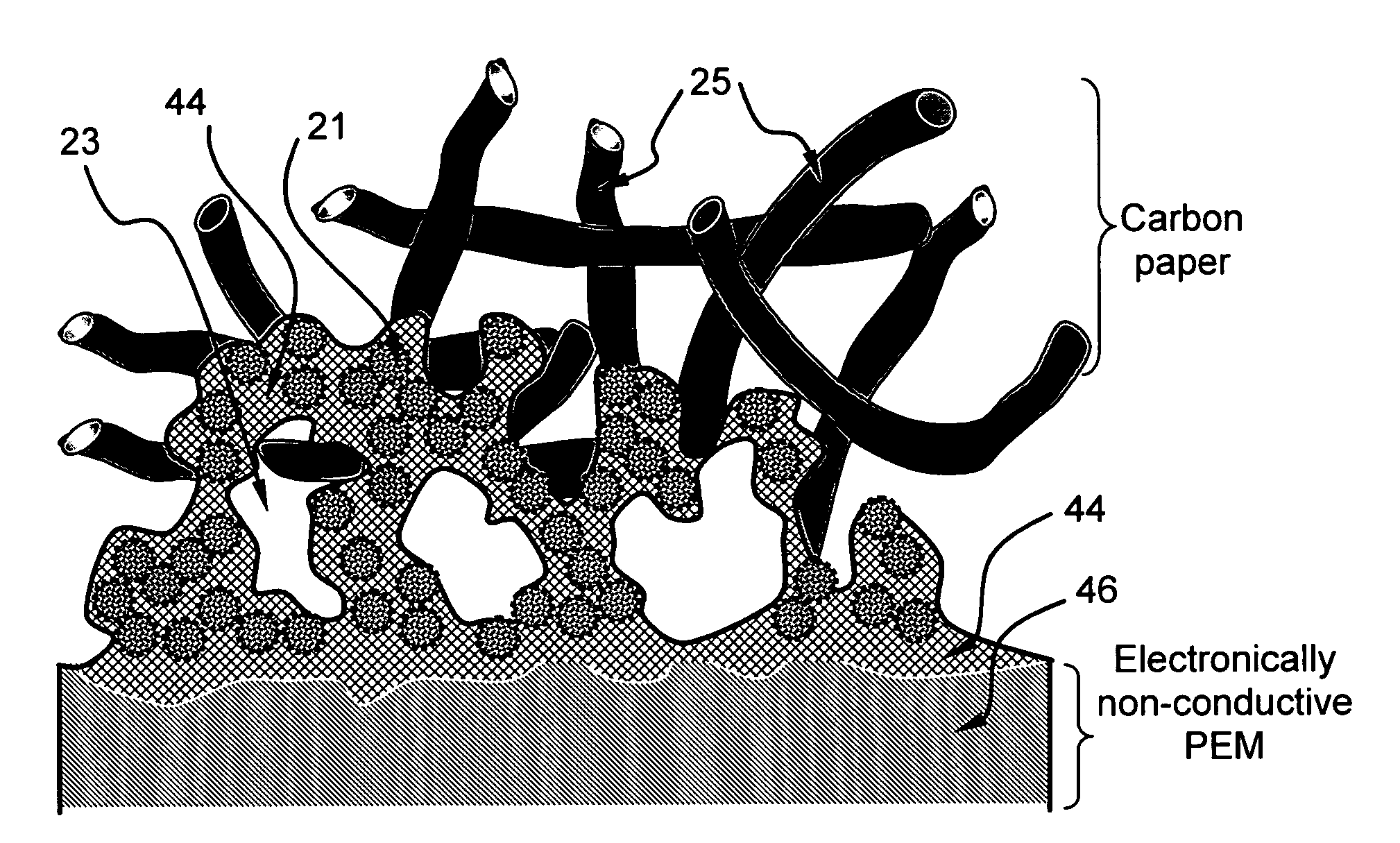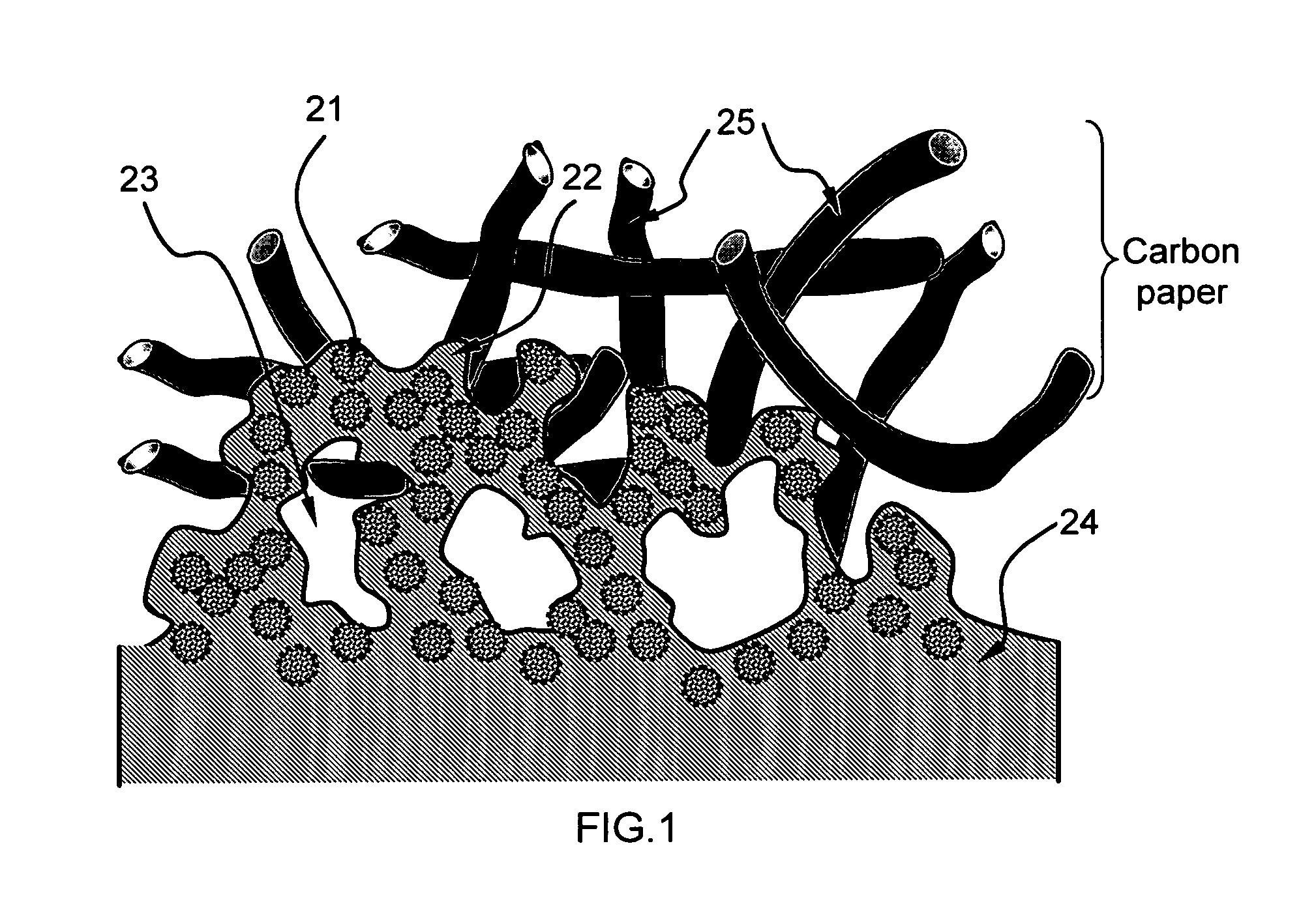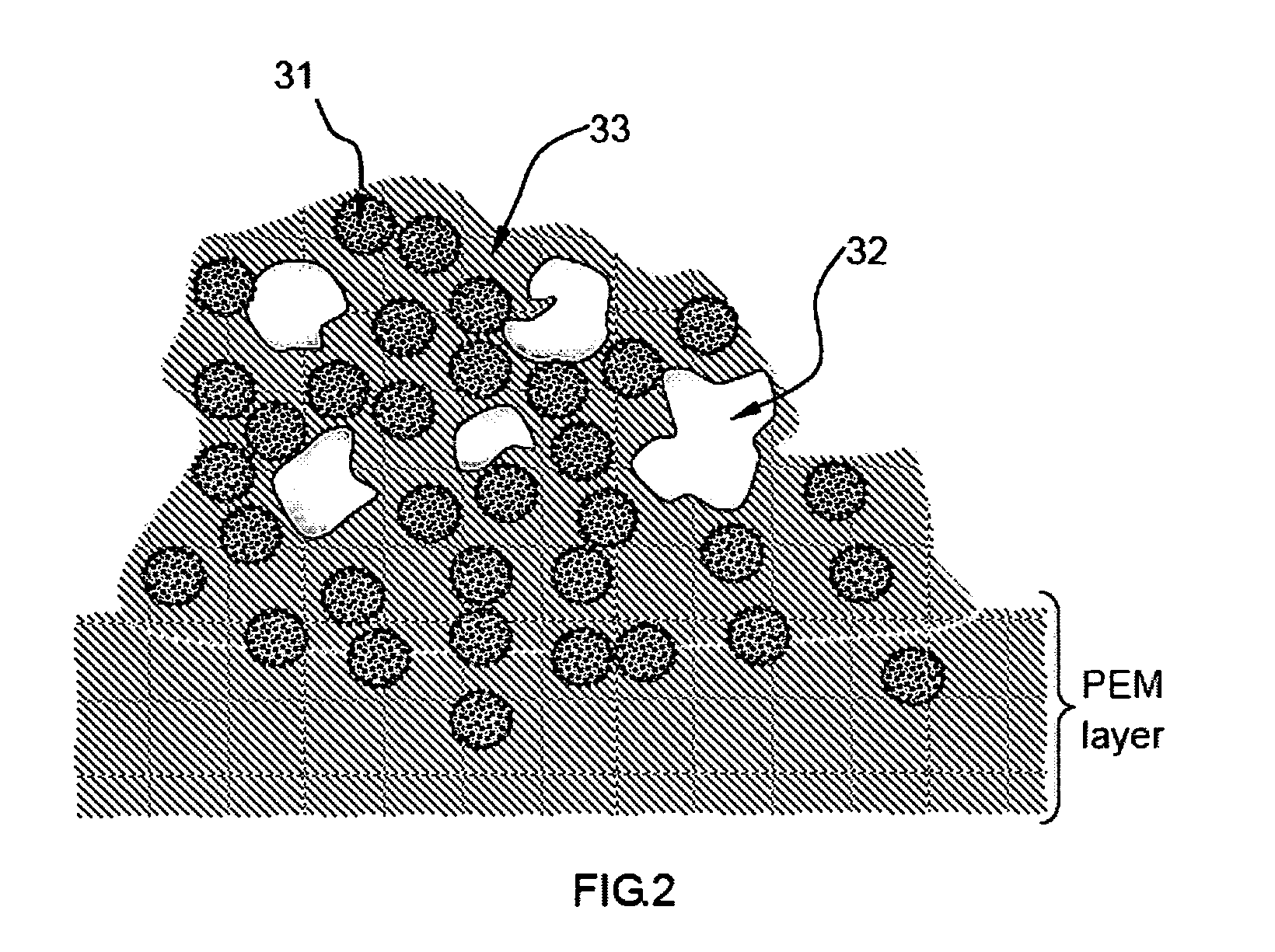Process for producing fuel cell electrode, catalyst-coated membrane and membrane-electrode assembly
a fuel cell and electrode technology, applied in the direction of cell components, basic electric elements, electrochemical generators, etc., can solve the problems of ionomer, although ion-conducting, and the inability to productively utilize electro-catalyst sites, so as to improve the fuel cell performance, reduce ohmic loss, and improve catalyst utilization efficiency
- Summary
- Abstract
- Description
- Claims
- Application Information
AI Technical Summary
Benefits of technology
Problems solved by technology
Method used
Image
Examples
example 1
Preparation of poly(alkyl thiophene) as an Electron-Conductive Component
[0083]Water-soluble conductive polymers having a thiophene ring (X=sulfur) and alkyl groups containing 4, 6, 8, and 10 carbon atoms (m=4, 6, 8, or 10) in Formula III were prepared, according to a method adapted from Aldissi, et al. (U.S. Pat. No. 4,880,508, Nov. 14, 1989). The surfactant molecules of these polymers were sulfonate groups with sodium, hydrogen, or potassium. Conductivity of polymers of this invention in a self-doped state was from about 10−3 to about 10−2 S / cm. When negative ions from a supporting electrolyte used during synthesis were allowed to remain in the polymer, conductivities up to about 50 S / cm were observed. Conductivities of polymers without negative ions from a supporting electrolyte which were doped with vaporous sulfuric acid were about 102 S / cm.
[0084]A doped poly(alkyl thiophene) (PAT) with Y=SO3H and A=H in Formula III that exhibited an electron conductivity of 12.5 S / cm was dissol...
example 2
Inks (Suspensions) Containing poly(alkyl thiophene), PPESK, Carbon Black-Supported Pt or Pt / Ru
[0086]Carbon black-supported Pt and Pt / Ru catalyst particles were separately added and dispersed in two aqueous polymer blend solutions prepared in Example 1. The PPESK-to-PAK ratio selected in both solutions was 1:1. The viscosity of the resulting solutions (more properly referred to as suspensions or dispersions) was adjusted to vary between a tooth paste-like thick fluid and a highly dilute “ink”, depending upon the amount of water used. These suspensions can be applied to a primary surface of a carbon paper or that of a PEM layer (e.g. Nafion or sulfonated PEEK sheet) via spraying, printing (inkjet printing or screen printing), brushing, or any other coating means.
[0087]A suspension comprising carbon black-supported Pt particles dispersed in an aqueous solution of PPESK and PAK was brushed onto the two primary surfaces of a Nafion sheet with the resulting catalyst-coated membrane (CCM) ...
example 3
Sulfonated polyaniline (S—PANi)
[0088]The chemical synthesis of the S—PANi polymers was accomplished by reacting polyaniline with concentrated sulfuric acid. The procedure was similar to that used by Epstein, et al. (U.S. Pat. No. 5,109,070, Apr. 28, 1992). The resulting S—PANi can be represented by Formula I with R1, R2, R3, and R4 group being H, SO3− or SO3H with the latter two being varied between 30% and 75% (degree of sulfonation between 30% and 75%). The proton conductivity of these SO3−- or SO3H-based S—PANI) compositions was in the range of 3×10−3 S / cm to 4×10−2 S / cm and their electron conductivity of 0.1 S / cm to 0.5 S / cm when the degree of sulfonation was from approximately 30% to 75% (with y being approximately 0.4-0.6).
[0089]A sample with the degree of sulfonation of about 65% was dissolved in 0.1 M NH4OH up to approximately 20 mg / ml. A small amount of carbon-supported Pt was added to the S—PANi solution to obtain a suspension that contained approximately 5% by volume of s...
PUM
 Login to View More
Login to View More Abstract
Description
Claims
Application Information
 Login to View More
Login to View More - R&D
- Intellectual Property
- Life Sciences
- Materials
- Tech Scout
- Unparalleled Data Quality
- Higher Quality Content
- 60% Fewer Hallucinations
Browse by: Latest US Patents, China's latest patents, Technical Efficacy Thesaurus, Application Domain, Technology Topic, Popular Technical Reports.
© 2025 PatSnap. All rights reserved.Legal|Privacy policy|Modern Slavery Act Transparency Statement|Sitemap|About US| Contact US: help@patsnap.com



